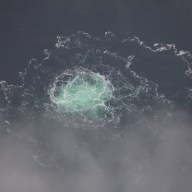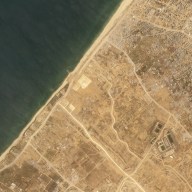Music has always played a major part in director Cameron Crowe’s films, with his semi-autobiographical “Almost Famous” being perhaps the most music-centric. So it was only a matter of time before the one-time music journalist threw himself into a rock ’n’ roll documentary like he’s done with “Pearl Jam Twenty,” about the iconic Seattle band. “‘Almost Famous’ was about loving music and being a fan, and ‘Pearl Jam Twenty’ is about loving music and being a band,” Crowe explains.
The film premieres tonight in cities around the world as a one-night event before starting week-long runs in select cities Friday, airing on PBS Oct. 21, and heading to DVD Oct. 25. Accompanying the film is a comprehensive book by Jonathan Cohen with Mark Wilkerson and a two-disc soundtrack of live recordings and bootlegs hand-selected by the filmmaker.
Crowe, a longtime friend of the band, admits a lot of inspiration for the project came from Martin Scorsese’s 2005 Bob Dylan documentary, “No Direction Home,” which also eschewed a traditional theatrical run.
“I felt so satisfied and inspired by that movie that I wanted to listen to more Bob Dylan,” Crowe says.
“It felt like a Bob Dylan experience, and I thought that if we can make a movie the way a Pearl Jam record makes you feel, then we’re in good shape.”
The director, who managed to squeeze all the band members into his Seattle-set romantic comedy “Singles” back in 1992, insists this isn’t your standard “Behind the Music” fare.
“It’s beyond just a rock story. In fact, it takes the usual rock story and turns it on its head,”?Crowe says. “These guys found joy through survival.”

Up next: The sequel, ‘PJ 40’?
Lead singer Eddie Vedder says it was fascinating to watch his own band’s history play out on the big screen.
“You look at all the crowd reaction,” he says. “It’s just music. It’s just guitars and drums and bass. To have it turn into this other thing is kind of a monument, in a way. I don’t mean to self-aggrandize, but it’s really something to see it and witness it, and, in this case, be reminded of it and have it right there in front of us so that we can appreciate it even more. And know that we have a really strong base to, like, cover the next 20.”
















